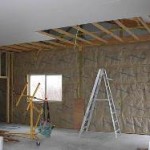Why Use Bookshelf Girts Rather Than Studs?
Long time readers may recall my Grandpa Pete was a home builder and his sons – Sid (my father), Neil, Lyle, Gil, Dave and Amund were all framing contractors. https://www.hansenpolebuildings.com/2011/06/before-the-pole-barn-guru/. Besides being raised with “wood is good”, I had a concept of vertical stud walls permanently ingrained in my head!
Stud walls led to my losing my posterior erecting my first post frame (pole barn) building. I struggled with this 90 degree ‘flip’ in framing concept far more than I needed to. Luckily, I was able to wrap my head around left-to-right rather than up and down when it came to my second building and I actually made some very good money!
Reader TRENT in WALLA WALLA writes:
“I am currently working on plans for building my first post frame home. It will be 30×48 single story. I am trying to figure out the best wall girt design. I am looking at going with 2×8 bookshelf wall girts or vertical stud walls between the posts. I see more people going with bookshelf girts vs vertical studs. Is there any drawbacks or reasons not to use vertical stud wall framing between the posts?”
Mike the Pole Barn Guru responds:
 Pretty straightforward – vertical stud walls will take more lumber. Besides increased material investment, more pieces mean more connections and more labor.
Pretty straightforward – vertical stud walls will take more lumber. Besides increased material investment, more pieces mean more connections and more labor.
Imagine, if you will, a pole building with a 10′ eave height and columns every 12 feet. Bookshelf girts take (1) 2x4x12′ pressure treated, (4) 2x8x12′, (2) 2x4x8′ for blocking girts ends and (2) 2x4x12′ to attach drywall at the ceiling level – 98.67 board feet of lumber. For stud walls (1) 2x6x12′ pressure treated, (7) 2x6x10′ studs, (1) 2x6x12′ top plate, (1) 2x4x12′ to attach drywall at ceiling level, (4) 2x4x12′ horizontally to attach steel to wall studs – 134 board feet of lumber. From a structural aspect, care will need to be exercised in attachment of the top plate and end studs to adequately transfer wall bay wind loads to columns. It may necessitate some sort of Simpson strap to properly anchor the plate to columns.






